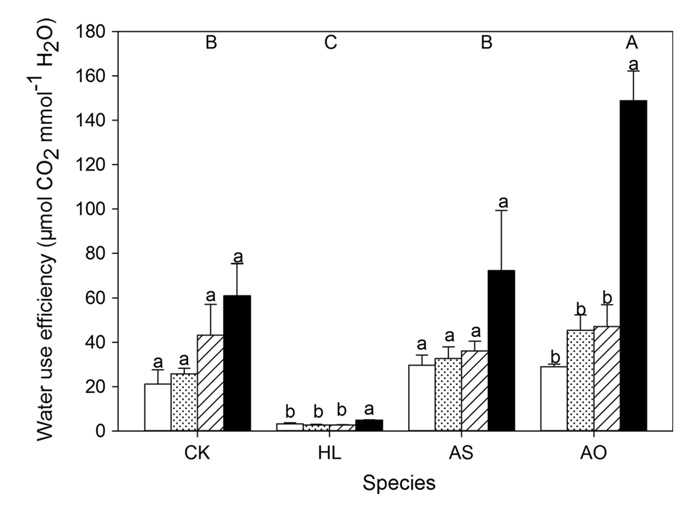| Tweet | Follow @co2science |
Paper Reviewed
Li, Q., Lai, L., Zhou, J., Du, H., Guan, T., Zhang, X., Jiang, L., Zheng, Y., Yu, Y., Gao, Y., An, P. and Shimizu, H. 2018. Differential influence of elevated CO2 on gas exchange and water use efficiency of four indigenous shrub species distributed in different sandy environments in central Inner Mongolia. Ecological Research 33: 863-871.
Arid and semi-arid ecosystems occupy approximately 40% of the land surface on Earth. Understanding how plants in these water-limited regions will respond to climate change is therefore of great interest to scientists. And thus it was that Li et al. (2018) set out to conduct an experiment to examine the impacts of elevated atmospheric CO2 on four such arid-ecosystem species, including Artemisia sphaerocephala, Hedysarum laeve, Artemisa ordosica and Caragana korshinskii.
These four plants represent the main indigenous species across large active and stabilized sandy desert regions in the Mu Us Sandy Land of Inner Mongolia, China. Given the limited amount of rainfall that is experienced there, Li et al. focused the majority of their analysis on detecting a CO2-induced response on the transpiration rate, stomatal conductance shoot water potential and water use efficiency of these species. And this objective was accomplished by subjecting one-month-old seedlings of the four plants to one of four atmospheric CO2 concentrations (400, 800, 1200 or 1600 ppm) over a period of eight weeks in controlled-environment chambers, after which the various ecophysiological responses were measured.
And what did their analysis reveal?
In the words of the authors, "all four elevated CO2 concentrations (400, 800, 1200, 1600 ppm) were found to result in decreased stomatal conductance (26-86%), decreased transpiration rate (21-80%), increased water use efficiency (WUE) (10-412%) for [the] two Artemisia species and Caragana korshinskii." H. leave also tended to benefit from elevated CO2 in each of these parameters, but to a lesser degree than the other species (see, for example, the figure below depicting the WUE response of each species to elevated CO2).
Given such favorable ecophysiological responses, Li et al. conclude that "plant exposure to elevated CO2 may partially offset the negative effects of increased drought due to their increased WUE and decreased transpiration." And that is great news for semi-arid regions like the Mu Us Sandy Land area of Inner Mongolia.

Figure 1. Water use efficiency (mean ± SE) of Artemisia sphaerocephala (AS), Hedysarum laeve (HL), Caragana korshinskii (CK) and Artemisia ordosica (AO) under different atmospheric CO2 concentrations (white column, 400 ppm; doted column, 800 ppm; hatched column, 1200 ppm; black column, 1600 ppm). Each bar represents the mean of three replicates; bars with different lowercase letters are significantly different from each other for same species under various treatments, and different capital letters indicate difference among species at P < 0.05 (Turkey' s test).




